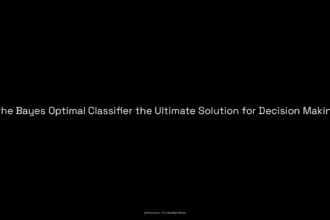Are you tired of getting penalized for your mistakes? Well, don’t worry, because today we’re diving into the world of Penalized-SVM! In this blog post, we’ll unravel the concept of penalty in Support Vector Machines (SVM) and explore how it can impact your data analysis. Whether you’re a data scientist, machine learning enthusiast, or just someone curious about the inner workings of SVM, this post will provide you with all the insights you need to understand the role of penalization in SVM. Get ready to unleash the power of Penalized-SVM and say goodbye to those pesky penalties!
Table of Contents
ToggleUnderstanding the Concept of Penalty in SVM
In the intricate dance of machine learning algorithms, the Support Vector Machine (SVM) moves with precision, guided by a conductor known as the penalty parameter, symbolized by C. This parameter wields the power to enforce strictness in the classification process, ensuring that each data point steps in line with the utmost accuracy. The penalty’s essence is to impose a cost on misclassification, which in turn, dictates the compromise between embracing missteps (errors) and maintaining a robust boundary (margin).
Let us envisage a scenario where data points are social attendees at a grand ball. The SVM, akin to a scrupulous chaperone, must decide how strictly to enforce the rules of the dance. A stern chaperone, symbolized by a high value of C, is less tolerant of missteps, pushing for a flawless performance but risking an atmosphere of tension. Conversely, a lenient chaperone, with a low value of C, allows for a more relaxed dance, with more missteps slipping through, thus fostering a broader yet potentially less precise margin.
To optimize this delicate balance, a method akin to a dance rehearsal is employed—grid-search. This technique systematically experiments with various C values, choreographing the perfect balance between precision and flexibility. The table below provides a distilled summary of key facts associated with the penalty in SVM:
| Aspect | Description |
|---|---|
| Penalty Parameter (C) | Controls the tolerance for errors and margin width in SVM classification. |
| High C Value | Imposes a stricter penalty on misclassification, leading to a narrower margin. |
| Low C Value | Permits more misclassifications but generally results in a wider margin. |
| Grid-Search | A method used to find the optimal C value by trying various combinations and evaluating their performance. |
The calibration of C is not merely a mathematical endeavor but a strategic choice, reflecting the pragmatism and aspirations of the model architect. The penalty parameter thus emerges not only as a technical tool but also as a narrative of the model’s evolution—a tale of striving for balance between the ideal and the practical. This is the art and science of machine learning, where the SVM, with its penalty parameter, performs a balancing act poised between the realms of precision and generalization.
As we look ahead, we’ll delve deeper into the ramifications of the C penalty parameter, exploring how this pivotal factor shapes the landscape of SVM classifiers. But for now, we appreciate the finesse with which the penalty parameter orchestrates the SVM’s performance, ensuring each calculated step leads to a harmonious balance between error tolerance and model strength.
The Impact of the C Penalty Parameter
In the intricate dance of machine learning, where precision waltzes with generalization, the C penalty parameter of a Support Vector Machine (SVM) leads the ensemble. It’s the masterful conductor, ensuring the algorithm doesn’t miss a beat while classifying data with the finesse of a prima ballerina. The role of C can be envisioned as a balancing act on a tightrope, where the goal is to reach the perfect harmony between minimizing training error and achieving a margin that’s just wide enough to be general yet precise.
Imagine SVM as a sculptor, and the C parameter as the pressure applied to the chisel. Too much force, represented by a high C value, and the sculpture becomes rigid and overdefined, prone to cracks under the slightest stress—this is the overfitting scenario. Conversely, apply too little pressure, indicative of a low C value, and the resulting form is shapeless, lacking definition and unable to capture the essence of the subject—akin to underfitting where the model is overly simplistic.
Thus, the essence of this parameter is not merely numerical but rather a narrative of the model’s evolution. It is a tale of how SVMs, with their intrinsic resilience to overfitting, still require the guiding hand of hyperparameter tuning to find their optimal point. This search for the right value of C is a quest for balance, an exploration of the space between the Scylla of misclassification and the Charybdis of excessive complexity.
Striking this balance is a strategic decision, akin to an artist choosing the right shade of color or a chef seasoning a dish to taste. The C parameter’s influence extends beyond the technical realm, weaving into the fabric of the model’s very narrative. It is a reflection of the model architect’s strategic vision, encapsulating a choice that reverberates through the classifier’s performance.
While the C parameter’s impact is profound, it is not the sole protagonist in the SVM saga. Other characters, such as kernel functions and feature scaling, also play significant roles. However, in the realm of penalization, C stands tall, a beacon that navigates the classifier through the tumultuous waters of high-dimensional data spaces towards the shores of predictive accuracy.
The journey of selecting an optimal C is akin to a rite of passage for every SVM model. It is a process that is both empirical, through techniques like grid-search, and intuitive, requiring the model architect to infer the subtle nuances that define their unique dataset. The selected C value then becomes part of the model’s legacy, a testament to the choices made during its creation.
As we delve deeper into the SVM’s core, we uncover the nuanced interplay between the penalty parameter and the model’s robustness. In the sections to come, we shall explore the implications of this parameter in greater depth, examining its role in the pantheon of SVM’s features and how it intertwines with the fabric of the algorithm’s predictive prowess.
Disadvantages of SVM and the Role of Penalization
The realm of Support Vector Machines (SVM) is one of precision and power, yet navigating it is not without its challenges. While SVMs are celebrated for their ability to carve out hyperplanes in multidimensional space, delineating classes with confidence, they also shoulder some intrinsic disadvantages. One of the most prominent obstacles is the lengthy training time required for large datasets. This can be a formidable barrier when dealing with big data, as the computational resources and time needed can escalate quickly.
Moreover, the complexity of the final model can often be akin to a labyrinth—difficult to understand and interpret. The subtleties of variable weights and their individual impacts can elude even the most astute minds, making the model seem like a black box. This opacity is not just a matter of academic concern; it affects how well the model can be tweaked to align with specific business logic or domain knowledge, which is often a critical step in model deployment.
To counteract these drawbacks, especially the risk of overfitting that can accompany complex models, SVM employs the concept of penalization. This is the machine learning equivalent of a balancing act. Just as a tightrope walker uses a long pole to maintain balance, penalization helps to keep the SVM model from falling into the trap of overfitting. The intricate dance of penalization in machine learning is a way to lessen the overfitting of the model, ensuring that it remains robust and generalizes well to new data.
The use of regularization in regression models illustrates this principle. By adding a penalty term to the loss function, regularization helps to keep the coefficients of the model in check, preventing them from reaching too high a value and thus reducing the risk of overfiting. This is akin to adding a weight to the pole carried by the tightrope walker, enhancing stability and control over the model’s predictions.
The C parameter, a hyperparameter in SVM, is the embodiment of this penalization. Think of it as the dial that adjusts the tension on the tightrope. Too much tension (a high C value) and the model becomes rigid, fitting to every nuance of the training data, which might not generalize well. Too little tension (a low C value), and the model becomes too lax, unable to capture the complexity of the data, resulting in underfitting. The art of SVM modeling involves turning this dial to the sweet spot where the model balances bias and variance harmoniously.
Thus, while the disadvantages of SVM present hurdles, the thoughtful application of penalization serves as a strategic countermeasure, guiding the model toward the desired level of generalization. It is through this careful calibration that SVMs can be harnessed effectively, overcoming their inherent challenges to provide powerful and reliable predictions.
L1 Penalty in SVC and its Effects
In the journey of SVM optimization, the L1 penalty stands out as a path less traveled. Unlike its L2 counterpart, the L1 penalty in Support Vector Classification (SVC) tends to produce sparser solutions — it encourages the model coefficients to be exactly zero. This attribute can be a double-edged sword. On one hand, it promotes model simplicity and feature selection inherently. On the other hand, when paired with small values of C, it can lead to a stark landscape of underfitting. The model becomes too generalized, too conservative, and might fail to capture the complexity of the dataset, resulting in predictions that are as bland as a canvas untouched by the painter’s brush.
This severe underfitting, akin to a sculptor who chisels away too much, leaving only the barest outline of the form, can be problematic. It results in a model that, while robust to the noise in training data, is insufficiently flexible to adapt to the intricacies of new or unseen data. Just as a key that is too generic fails to unlock a specific lock, an underfitted model fails to unlock the insights within the data.
Thus, the L1 penalty, when used with a delicate hand, can sculpt a model that is both simple and predictive. But when the regularization is too strong, it risks creating a model that, while sturdy, lacks the finesse to grasp the finer details of the data it seeks to represent. The selection of the optimal C value in this context becomes a critical decision, one that requires both empirical evidence from cross-validation and an intuitive understanding of the underlying data structure.
Embracing the L1 penalty in SVC is a testament to the modeler’s strategic insight. It is an exploration of the delicate balance between simplicity and complexity, an interplay that is central to the art of machine learning.
The Role of Penalty as a Hyperparameter
In the intricate dance of designing a machine learning model, the penalty emerges as the maestro, orchestrating the balance between a model’s complexity and its predictive accuracy. When we speak of penalties in machine learning, we’re discussing a hyperparameter—a pre-set conductor that guides the learning algorithm. This hyperparameter remains constant during training, whispering the rules of harmony to prevent the model from memorizing the noise along with the music of the data.
Just as a symphony cannot commence without the conductor’s cue, a machine learning model relies on the penalty to begin its journey towards learning. Regularization and penalty may often be used interchangeably, but they perform similar roles—both ensure the model doesn’t overstep into the realm of overfitting, where it performs well on the training data but stumbles when faced with the unknown tunes of new data. The penalty term delicately adds a cost to the optimization function, compelling the model to choose a solution that may not have the lowest possible error on the training data but stands robust against future compositions.
Implicit Regularization
Now, imagine a scenario where the maestro has more than one instrument to maintain the symphony’s integrity. Implicit regularization is akin to the subtle yet powerful instruments that play softly in the background, enhancing the overall sound. Techniques such as early stopping, where training halts before the model overfits, or the employment of a robust loss function that is less sensitive to anomalies in the data, contribute to this silent orchestra of model generalization.
Moreover, the act of discarding outliers can be likened to removing dissonant notes that could otherwise disrupt the melody. These methods, while not as direct as the explicit penalty, serve as supporting players that help to shape the learning process, ensuring that the final performance—our predictive model—can adapt to new audiences and stages, which in the world of data, means unseen datasets.
The strategic ensemble of these regularization techniques, with the penalty playing the leading role, equips machine learning models like the penalized SVM to achieve a performance that resonates well beyond the confines of the training data. Together, they create a harmonious chorus that sings to the tune of reliability and generalization, ensuring that our machine learning models don’t just memorize the training scores but truly learn to perform in any arena they encounter.
As we venture into the realm of penalized regression methods, the next section will reveal how these various instruments come together to compose a model that is not only predictive but also profoundly insightful.
Penalized Regression Methods
In the realm of statistics and machine learning, penalized regression methods stand as vigilant sentinels against the specter of overfitting, ensuring models retain their predictive prowess without succumbing to the whims of noise within the data. These methods ingeniously retain the full suite of predictor variables, yet exert a disciplined influence on the regression coefficients, guiding them towards the tranquil shores of simplicity by shrinking them toward zero.
Imagine a sculptor, chiseling away at a block of marble — this is akin to the process of penalized regression. The sculptor starts with the entire block, the full set of predictors, and carefully chips away, reducing the dominance of certain features, akin to coefficients, without discarding them outright. As the sculptor’s chisel dances across the marble, some features emerge more prominently than others, and some may effectively disappear, akin to coefficients shrinking to zero. This artistic endeavor is not just about what is left but also about the harmony of the remaining elements.
Two of the most celebrated techniques in this domain are Ridge Regression (L2 regularization) and Lasso Regression (L1 regularization). Ridge Regression is like a gentle whisper, persuading all coefficients to be small yet not silent, maintaining the collective voice of all predictors. Lasso Regression, on the other hand, is more decisive, capable of completely silencing some coefficients, enabling it to perform both regularization and feature selection simultaneously.
This strategic shrinkage is not arbitrary; it is governed by a tuning parameter that acts as the conductor of an orchestra, determining the intensity of regularization. When the tuning parameter is set high, the melody of regularization plays louder, and more coefficients are driven towards zero. Conversely, a lower tuning parameter softens the regularization’s impact, allowing the coefficients more freedom to express the data’s nuances.
Such methods are not just tools for improved prediction; they are instruments for uncovering the symphony within the data, revealing which predictors play the lead role and which are mere supporting cast. By doing so, penalized regression methods enhance the interpretability of the model, a crucial aspect for experts who seek insight as well as foresight from their analytical endeavors.
It is important to note, however, that the choice of penalty — whether it be L1, L2, or a combination known as Elastic Net — is a critical hyperparameter that requires careful tuning. It is influenced by the unique characteristics of the dataset at hand and the specific requirements of the task. Thus, the quest for the optimal penalty is a key part of the model selection process, a challenge that beckons the data scientist to engage in a rigorous exploration of hyperparameter space.
The journey of penalized regression is a tale of balance, a harmonious blend of complexity and simplicity. It is a story that weaves the threads of raw data into a tapestry of understanding, providing a clear view of the landscape of predictors while safeguarding against the pitfalls of overfitting. As we continue to delve deeper into the intricacies of machine learning, let us carry with us the essence of penalized regression methods — the noble pursuit of clarity and precision in the face of uncertainty.
Q: What is penalized-SVM?
A: Penalized-SVM refers to a variant of Support Vector Machines (SVM) that incorporates penalization techniques to avoid overfitting and improve generalization of the model.
Q: What is the penalty parameter in SVM?
A: In traditional C-SVM, the penalty parameter, denoted as C, is used to control the tolerance of systematic outliers. A larger value of C allows fewer outliers to exist in the opposing classification.
Q: What is the effect of the C penalty parameter in an SVM classifier?
A: The C penalty parameter in an SVM classifier helps control the trade-off between the training error and the margin. It determines the penalty for misclassified data points during the training process. A higher value of C puts more emphasis on minimizing the training error, potentially leading to a narrower margin.
Q: What does “penalized” mean in regression?
A: In regression, “penalized” refers to the use of regularization techniques to constrain or shrink the regression coefficients towards zero. This helps prevent overfitting and can also perform variable selection by shrinking some coefficients to zero.
Q: How can I reduce overfitting in an SVM classifier?
A: To reduce overfitting in an SVM classifier, you can implement the following strategies:
– Use cross-validation to find the optimal value for the penalty parameter (C).
– Increase the penalty parameter (C) to put more emphasis on minimizing training error.
– Collect more training data to improve the generalization of the model.
– Apply feature selection techniques to reduce the number of input variables.





